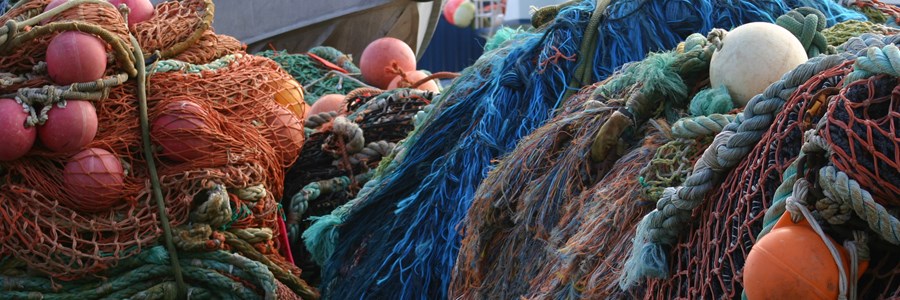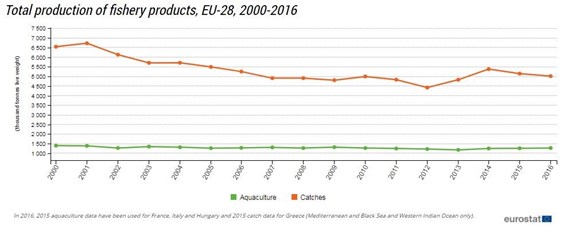EU fisheries management runs into difficulties

The European Commission has launched its annual consultation on the state of fish stocks and the preparation for setting fish quotas for next year marked by the objective to fish all stocks at maximum sustainable yield (MSY1) levels by 2020. The good news is that most of the stocks in the North East Atlantic have already reached this target. However, and despite generalised fishing effort reductions, some fish populations are struggling to rebuild or even to remain at current level. The answer may be found in the latest scientific advices which revealed major challenges in some fisheries caused by the destabilizing effect of the full introduction of the landing obligation and environmental factors such as climate change. The European fishing industry represented by Europêche expresses once again its concern over the stated aim to have all stocks at biomass levels that can produce Maximum Sustainable Yields will prove to be counterproductive, since the production capacity of our sea bas
The main goal of fisheries management under the Common Fisheries Policy (CFP) is to secure the long-term exploitation of fish populations. For that purpose, in the North-East (NE) Atlantic, the setting of fishing opportunities is based on the best available science from the International Council for the Exploration of the Sea (ICES). This scientific body gives a yearly series of catch limit recommendations (TACs), based on the stringent levels dictated by the MSY policy, allowing fishermen to catch only a small fraction of the fish stocks in order to secure the long term reproductive capacity of these fish stocks.
Europêche underlines that in the NE Atlantic enormous quick achievements have been realised: in 2019, 59 out of 76 TACs have been set according to MSY levels compared to only 5 in 2009. In addition, the size of the fish stocks in the NE Atlantic has increased by more than 36% on average over the last 10 years. This huge improvement has only been made possible by a strong reduction in fishing effort by shrinking the EU fleet by more than 22.000 fishing vessels in the EU2. Still, it must be acknowledged, effort reductions do not always translate into larger quotas.
Examples of the above are the cod stocks in the southern part of the North Sea and the Eastern Baltic where, despite continuous effort reductions and after years of slow but steady recovery, the stock biomass is again in sharp decline. Scientists point to a mix of environmental and fisheries factors such as poor recruitment of young cod, climate change, and alterations in fishing patterns due to the destabilising effect of the EU landing obligation.
Daniel Voces, Managing Director of Europêche, stated: “Scientific data prove that the introduction of the EU landing obligation has been and still is more complex than politicians have foreseen and has led to unintended, harmful consequences in fisheries management, undoing the achievements and sacrifices made over the past years by fishermen. It confirms that from the perspective of fisheries management there was no need to introduce the landing obligation in the EU. The landing obligation is changing fishing patterns with potentially (and mostly still unknown) destabilising knock-on effects. The advised steep TAC reduction for cod will certainly lead to choke situations in many fisheries, preventing fishermen to fully utilise their quota with significant economic losses as a consequence.”
Europêche notes that even though the number of stocks fished at MSY levels has increased over time, statistical data3 show that the total production of seafood in the EU has not changed over the last 15 years. Mr Voces concluded: “The CFP dictates the need to achieve MSY levels for all fish stocks by 2020, but at what cost? Science clearly indicates that having all stocks at MSY levels is an unrealistic expectation that could only be achieved through significant reduced yields. The EU cannot afford to offer less supply of fish to its home market resulting in an ever increasing self-sufficiency gap for seafood: Already more than 60% of EU seafood consumption is imported from non-EU countries. Fish must be a healthy protein accessible to all EU consumers, not a luxury item.”
In this regard, the sector has always advocated to fish the main target stocks at MSY levels while monitoring the positive evolution of the by-catch stocks. This approach has led to the recovery and responsible fishing of many important fish stocks in the EU. The challenge still remains on how to deal with fisheries management for different ecosystem compositions. Trying to strike the right balance between harvesting predators such as cod and prey such as herring has proven to be difficult and complex.
- MSY: The largest average yield (catch) that can theoretically be taken from a species’ stock over an indefinite period under constant environmental conditions.
- Despite the enlargements of the EU, the number of EU vessels in 2018 was 81 644 compared to 103 834 in 1996, of which only 65 400 remain active.
- https://ec.europa.eu/eurostat/statistics-explained/index.php/Fishery_statistics#Catches

Ends
Press contacts:
Rosalie Tukker, Policy Advisor of Europêche: +32 (0)2 230 48 48 rosalie.tukker@europeche.org
Sources: Europeche
Attachments:
Tags: maximum sustainable yield, fishing effort, Eastern Baltic, choke stiuations, fishermen, herring, consumption, seafood, Cod, recruitment, North Sea, ICES, tacs, common fisheries policy, biomass, Climate change, Landing obligation, fisheries, North-East Atlantic, quotas, fish stocks, european commission, import, fisheries management, CFP